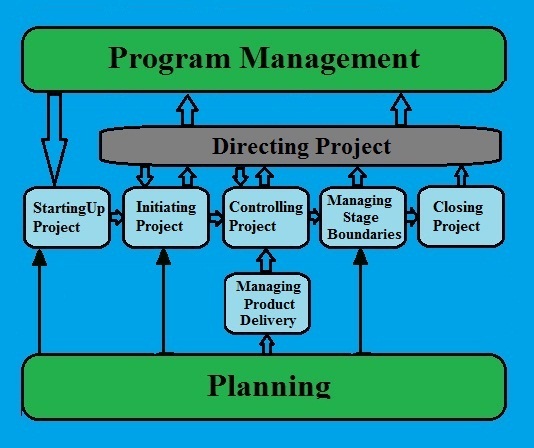Scrum Methodology: Is It Right for Your Project?

In agile project management, Scrum methodology is commonly utilized by small and mid-sized companies developing software products and applications. These small teams are able to use the fact that they do not have a large budget that can pay additional people, but are necessary to complete the job correctly and quickly. Such as when you are in an emergency, going into a Scrum framework makes it easy for the agile team to get their deliverables done.
To help you determine the right framework for your software development project, here is the essential information regarding Scrum methodology.
What is Scrum Methodology?
Scrum in project management is a structure used for managing and organizing the moving parts of any project. It was originally designed for software development; however, it is now used by project managers and enterprises across many disciplines.
This methodology works well for smaller teams who try to tackle IT projects with unknown solutions and changing deliverables while frequently interacting with end-users or clients.
Scrum helps by offering iterative and incremental phases of production and can deliver products that are functional with more frequency and good speed.
Moreover, along with empowering teams to think and work creatively, it also drives feature prioritization by organizing goals and features into deliverables that the workers can work on in sprints of two weeks; thus, teams can complete the important tasks first.
Scrum methodology can be used by anyone who wants to create an end product like a software program, a construction project, or a webpage. So, let’s look closely to determine if Scrum can be the right project management methodology for your team or not.
Benefits of Agile Scrum Methodology
Choosing and implementing a new method of project management for your team can bring various challenges in front of you. Agile Scrum methodology offers many attractive advantages that you can offer your team and help them to move in a more efficient way than before. Some of those benefits are:
Visibility
Stakeholders can see the progress of a well defined project at the agile scoping phase as well as throughout its entire lifespan. Thus, they feel more involved, like the working team, while offering everyone the chance to collaborate with each other and watch the movement or progress of the project from start to finish.
Adaptability
Agile Scrum methodology includes frequent updates and check-ins, so if you feel the need to change a project, it won’t need to wait or grow weak for several weeks before someone notices.
You can discover a problem and pivot necessary changes as quickly as possible without losing several weeks of hard work. Moreover, your project can enjoy continuous improvement throughout its entire lifespan rather than facing a few periods of notable changes.
Efficiency
With Scrum Methodology, you and your team can work more efficiently and enjoy remarkable results.
Three Basic Roles in Scrum Project Management
To know more about Scrum methodology, you need to know its specific project management roles.
1. The Scrum Master is a person who takes care of all the roles and responsibilities, who needs to be self-motivated and focused on specific knowledge such as blockchain for IT project management.
The Scrum Master needs to provide the team with accountability and deployment of the continuous process improvement, which is a key part of the methodology, thus ensuring that participants in your team are working efficiently.
2. The Product Owner is responsible for keeping the product backlog in a high-quality state. This backlog is an ordered list of features the team wants to work on and what needs to be done.
The Product Owner needs authorization to change the priorities of features based on user feedback or market demand. Thus, the role of Product Owner is to determine the best approaches and work items that will satisfy the end user.
3. Developers: These are the team members who are tasked with the proper execution of the product deliverables.
The developers are the ones who get the product specifications and can then create their own components. This role is to ensure that there are no quality issues and sufficient time to deliver a functional product.
By choosing Scrum Methodology for your team and knowing the details regarding Agile vs. Scrum Methodology, you can help them work more easily and efficiently.
What Scrum Tools Your Team will Use
You and your team need a number of tools to ensure the success of your agile project. Here are some basic Scrum methodology tools that your team can use to make sure your project gets to the finish line without delays:
- Sprint backlogs: The sprint backlog is a collection of all of the tasks that need to be completed during a specific sprint. This backlog is also known as an “in-box” because it’s where tasks flow into the sprint and where they need to go out of. Managers can put tasks on the sprint backlog based on both business criteria and how much progress has been made on each item.
- Prioritization: Prioritizing tasks every two weeks enables teams to get several activities done at once before moving on to the next activity in the larger schedule. These activities help a team accomplish its goals and are also known as “chunk” work (referred as work package in traditional project management).
- Retrospectives: Retrospectives are used to help your team communicate with each other. The goal of the retrospective is to figure out what went well, what went poorly, and how your team can improve next time.
- Burn-down charts: These charts show how each team member’s efforts compare to the goals set before the start of the project.
- Sprint meetings: When everyone is ready to start the next sprint, a sprint review meeting should be held to determine how each team member’s progress was on their tasks. This is a great opportunity for the team to improve and make sure that everyone’s deliverables are ready to be delivered.
- Quality gates: At the end of every sprint, a quality gate determines how close the product or project to be finished is. This helps set priorities for your team and may increase motivation for completing some tasks before moving on to others that need completed more urgently.
Getting Started with Scrum Methodology
To start using this agile software development framework, a company must be ready to have a product management and development team, as well as the proper time to plan your sprints and accomplish sprint goals.
Here are the essential steps that your team can take to start using agile Scrum methodology:
- Establish the project management process. This includes defining the scrum roles and roles of the product owner to work with, as well as clarifying the communication flow in your team.
- Create a backlog of the product that your team will be creating. The product backlog is a list of all the work that needs to be created, developed, or manufactured.
- Create your first sprint backlog. Your first sprint will allow your team to start the development process and see how well the project management tools and plans work together.
- Kick off your first sprint and complete it before moving on to the next steps in Scrum software development methodology.
- Repeat steps 3 and 4 until you have completed all your sprints.
- Conduct a retrospective on your progress for the sprint, and make any needed changes or adjustments to the process used by your team.
- Follow the iterative development cycle as this is designed to help your team stay on track with their overall goals and project.
- Repeat steps 1-6 for the next sprints until you have completed your final sprint, and deliver a final product or service to your end users that meets the project goals set out ahead of time.
- Perform a final retrospective for the project as a whole, and evaluate whether or not your team will be integrating this agile approach into future projects.
Conclusion
Scrum is a tried and true project management framework that can help your team remain on track with their goals, deadlines, and deliverables. This agile methodology is versatile and can be used for projects that are small or large, or projects that occur over a short or long period of time.
Scrum will help you to see how well your team works together and where the strengths of your team lie. It will also help you to see the areas of improvement that your team needs to focus on, especially with their project management process and other tactics.











